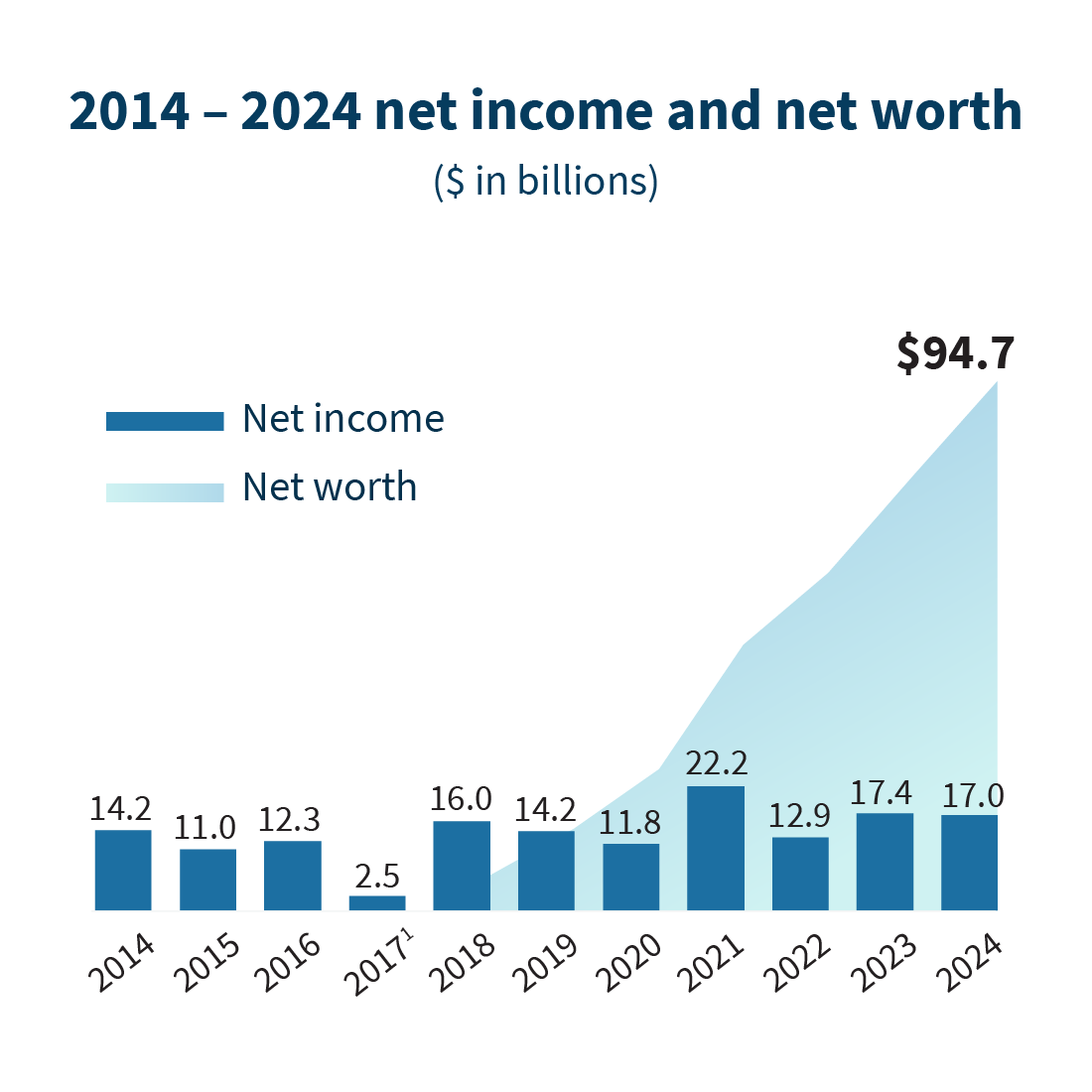Fannie Mae Today
While our role providing liquidity and stability to the residential mortgage market and promoting affordable access to mortgage credit has remained constant, we’ve strengthened our business model significantly since entering conservatorship. This makes us better able to withstand market fluctuations and respond to risk. And we’re better prepared to serve homebuyers and renters in good times and tough times.
We’ve transformed our business model
Previously, we earned most of our revenue by holding a large investment portfolio of mortgages and mortgage-backed securities. Today, we have drastically reduced our portfolio and shifted to a more stable, guaranty fee-driven business model. Our model is focused on receiving a steady stream of monthly fees to guarantee the timely payment of principal and interest on the mortgage-backed securities we sell to American and global investors.
We’ve demonstrated consistent, strong earnings power
As we’ve transitioned our business model, we’ve achieved 13 straight years of annual profitability. We’ve now paid approximately $181 billion to the Treasury in senior preferred stock dividends, which is about $62 billion more than we have received in support from the government since 2008. And in just the past 5 years, when we’ve been permitted to retain our earnings, we’ve increased our net worth by over $81 billion, resulting in nearly $95 billion of net worth as of the end of 2024.
We prepare for when we’re needed most
We provide financing every day to help strengthen the housing market, which contributes to the economy, job growth, and a better quality of life across America. Our role is even more critical in tough moments for the economy. For example, during the COVID-19 pandemic, many other financial institutions held back their mortgage purchases, which would have prevented many people from securing a mortgage or refinancing. Fannie Mae stepped in and provided additional support, increasing our mortgage purchases to ensure a strong housing market and help the economy.
At the same time, we developed innovative and flexible tools for mortgage companies to help renters and homeowners impacted by the pandemic. For homeowners facing financial hardships, we offered the option to suspend or delay mortgage payments up to 18 months. We helped more than 1.4 million homeowners under this plan.
Fannie Mae stepped in during the pandemic to support access to homeownership
To help ensure we are able to meet the housing market’s needs in times of stress, the U.S. government has established rigorous bank-like capital requirements that we will be required to meet to allow us to operate during difficult economic periods. We are building our capital reserves to meet these requirements.
At the same time, since entering conservatorship, we’ve focused on improving the resilience and credit quality of the book of mortgages we guarantee. This greater resilience is shown in the annual Dodd-Frank Act Stress Test (known as DFAST) our regulator mandates that we conduct to assess our ability to withstand difficult economic conditions. Over the past few years, our DFAST results have shown limited or no pre-tax losses during severe economic downturn scenarios that were far worse than the 2008 financial crisis. This underscores the strength of our business and its ability to serve as a source of stability in the market today and in the future.
12017 GAAP net income includes a $9.9B provision for federal income taxes resulting from the remeasurement of Fannie Mae’s deferred tax assets due to the corporate tax reduction in the Tax Cuts and Jobs Act.
2Dividend payments do not reduce the senior preferred stock’s liquidation preference, which includes cumulative amounts drawn from Treasury.
3For information on how these ratios are calculated and what they represent, see endnote 17 of our Q4 and Full Year 2024 Financial Supplement.
4U.S. G-SIB banks refers to United States global systemically important banks, as defined by the Financial Stability Board. U.S. G-SIB banks capital metrics represent the average of those banks’ capital requirements post-2024 stress test as outlined by the Federal Reserve. For additional information, see endnote 19 of our Q4 and Full Year 2024 Financial Supplement.
All charts reflect data through the end of 2024 unless otherwise noted.
Page last revised: 2/28/25








